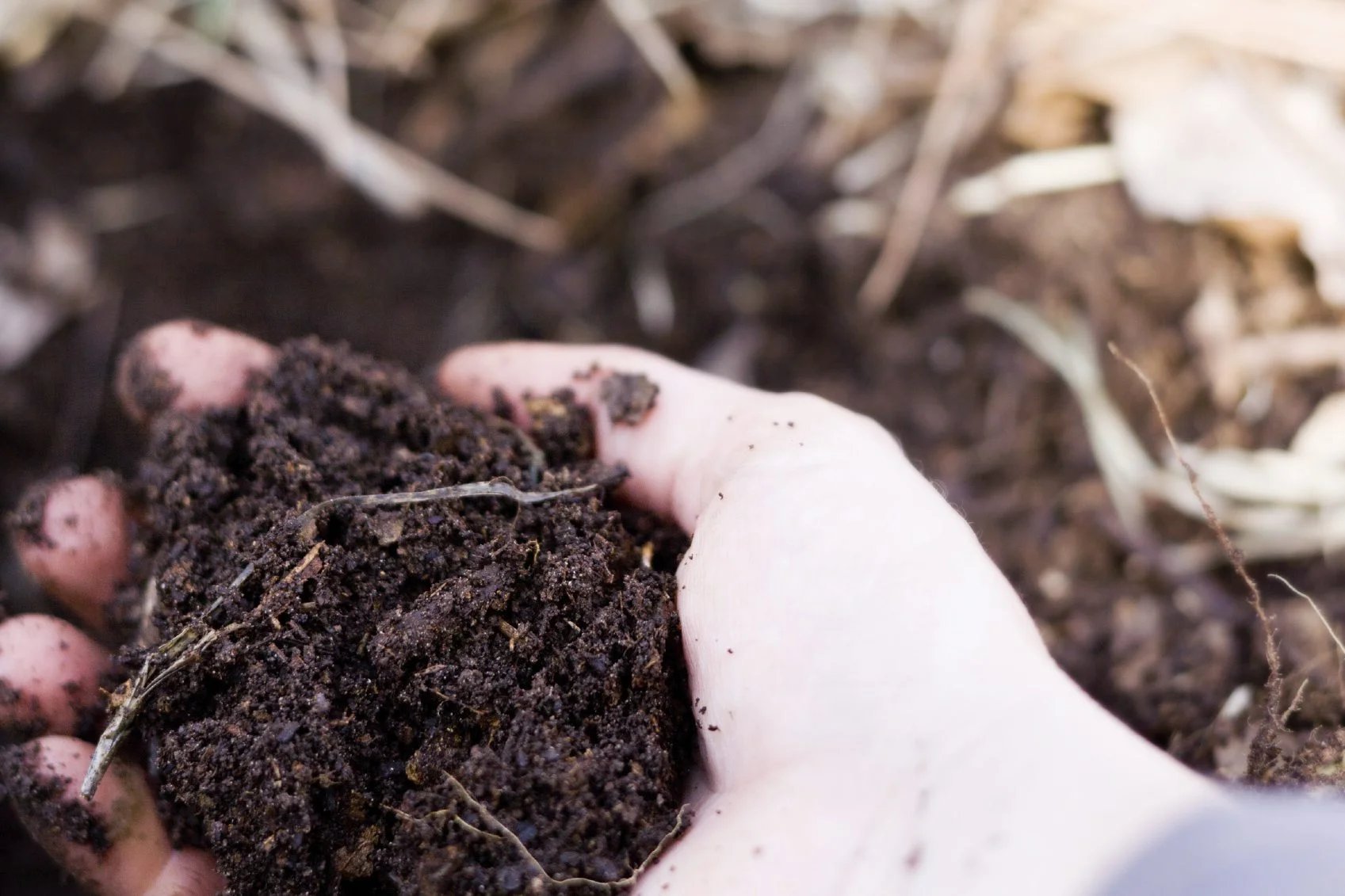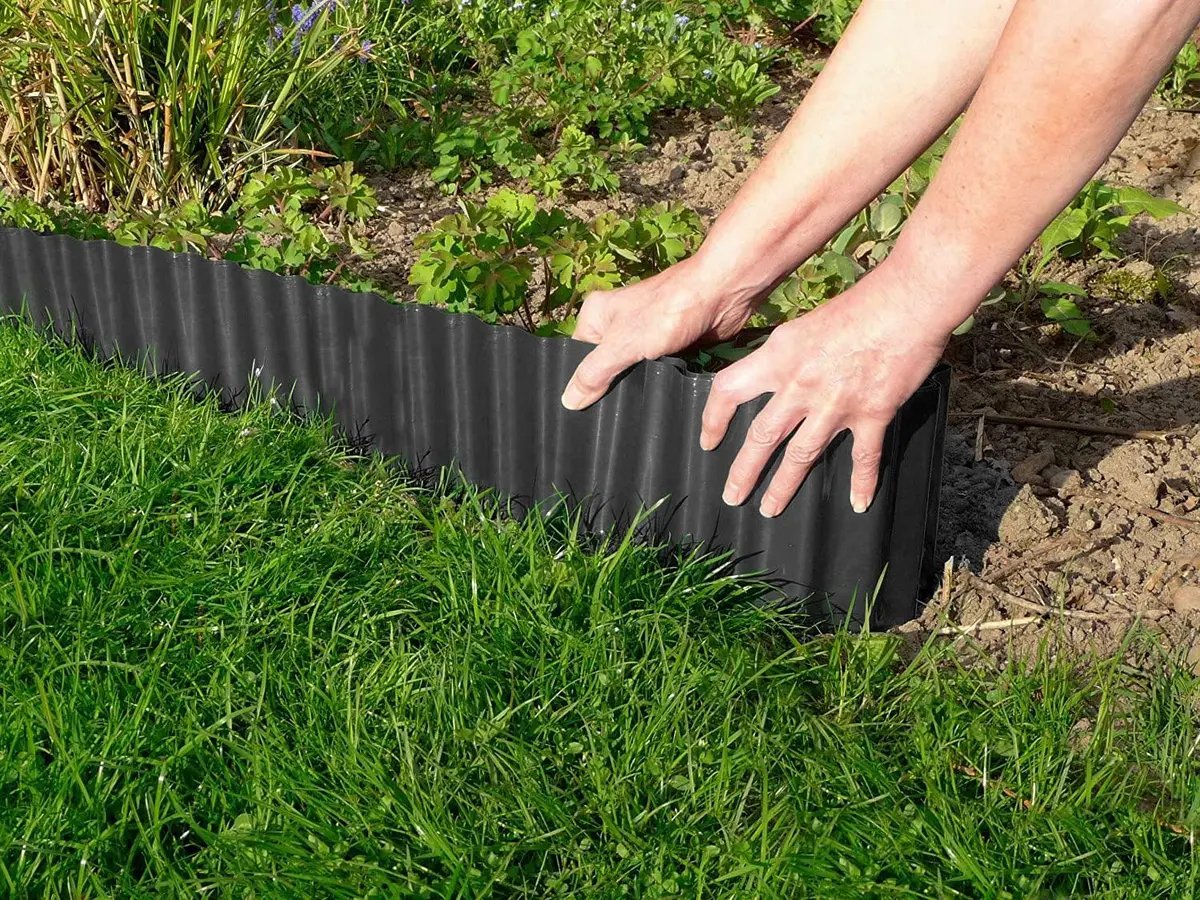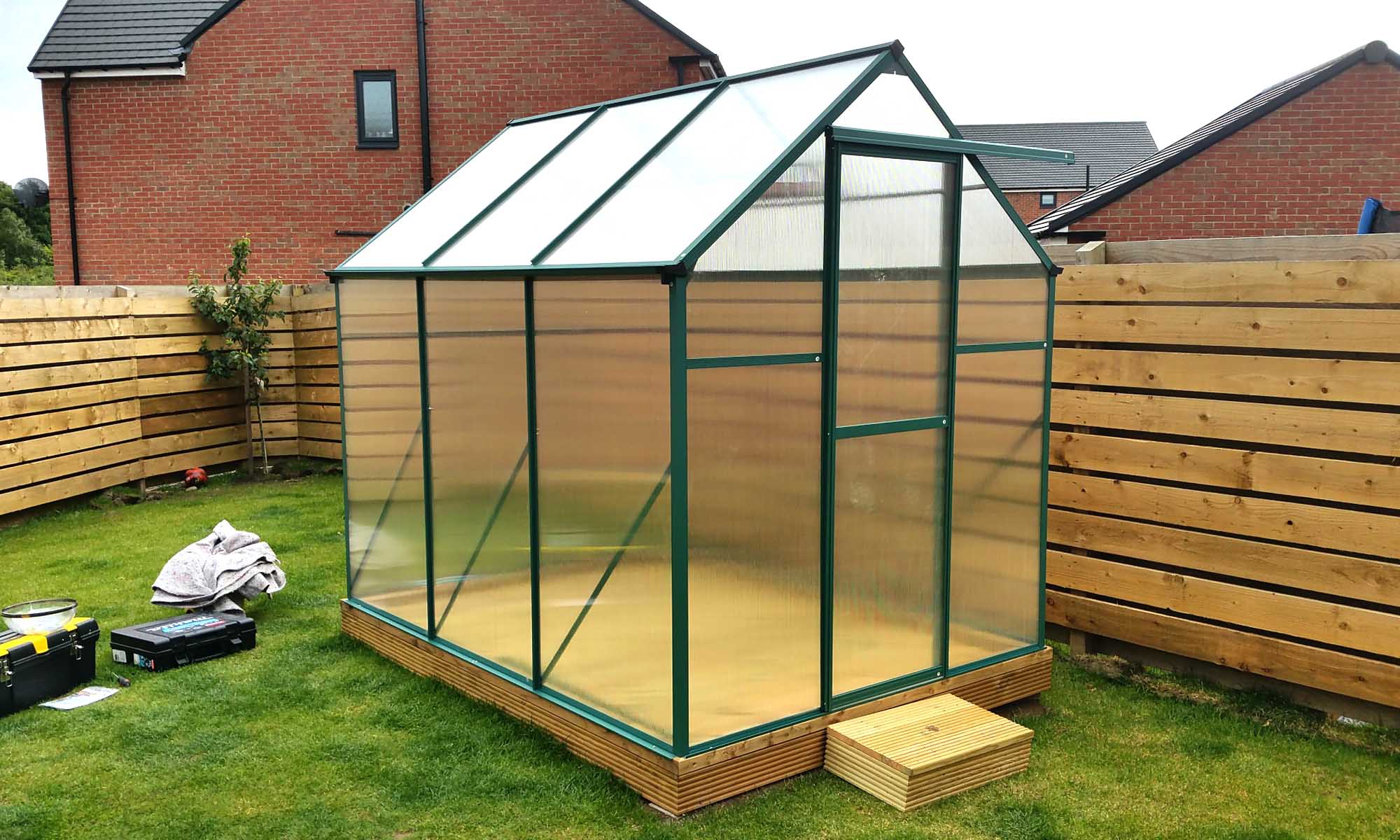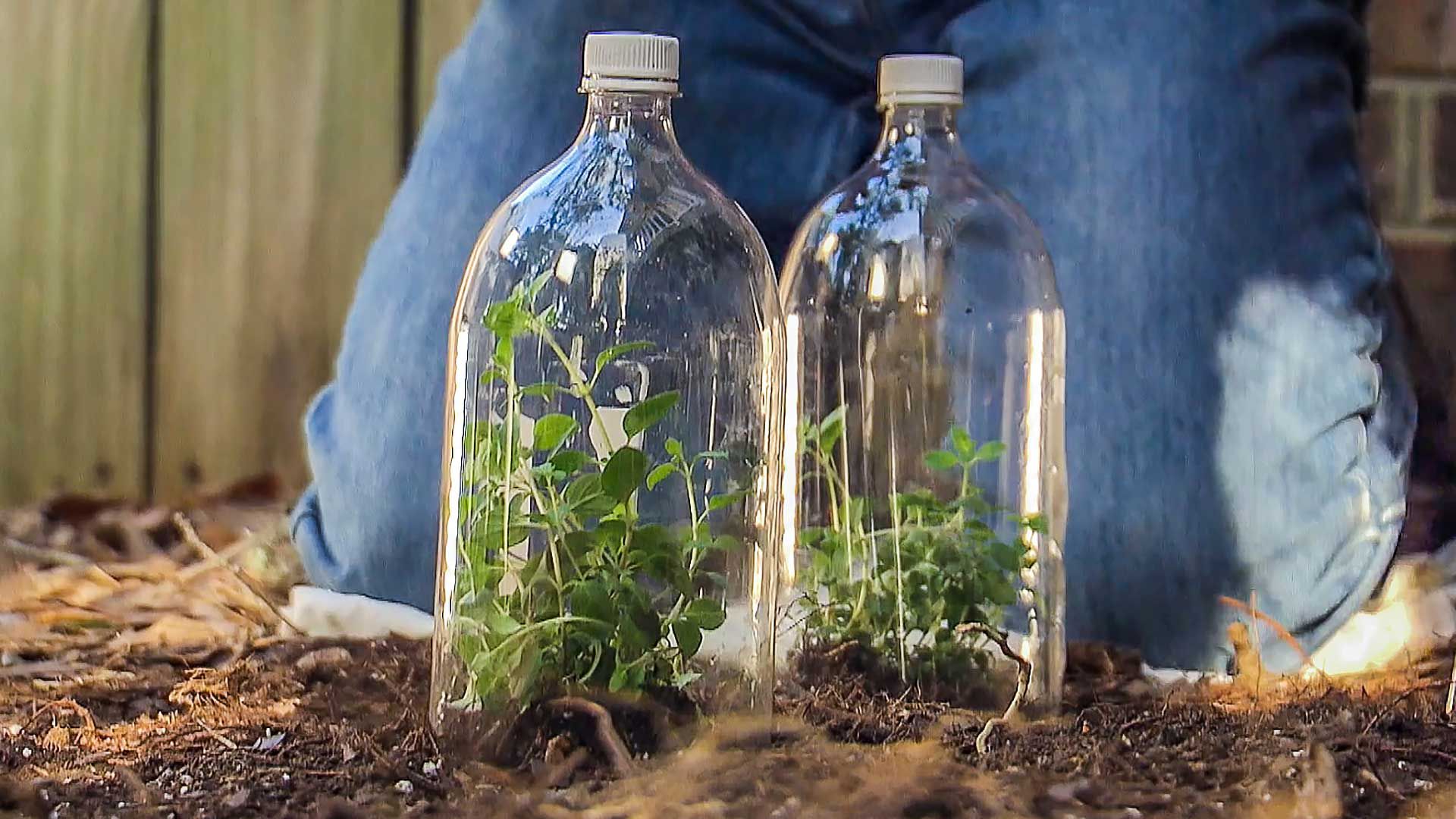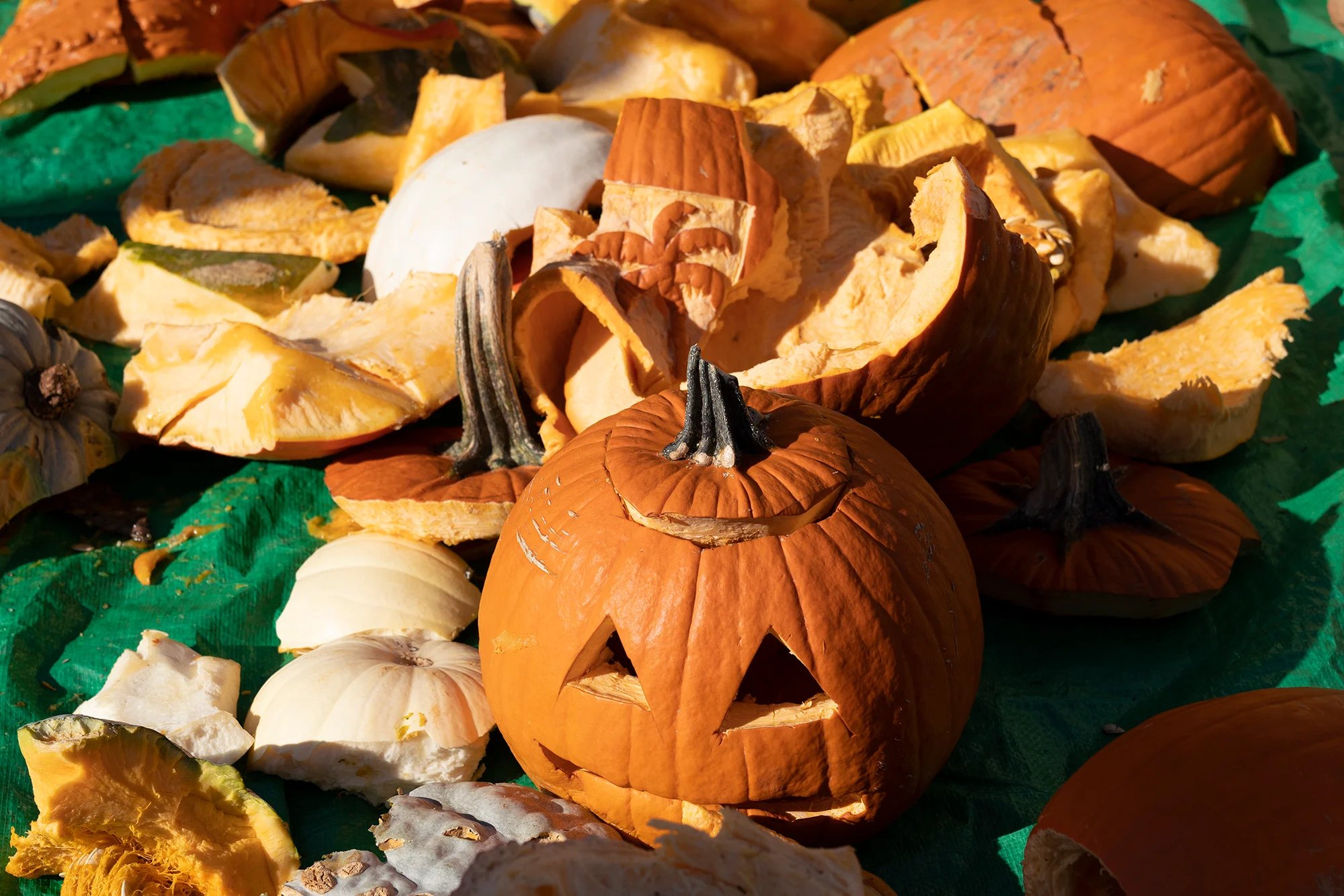Home>Gardening Tips and Tricks>Problem Solving>How To Compost Compostable Plastic
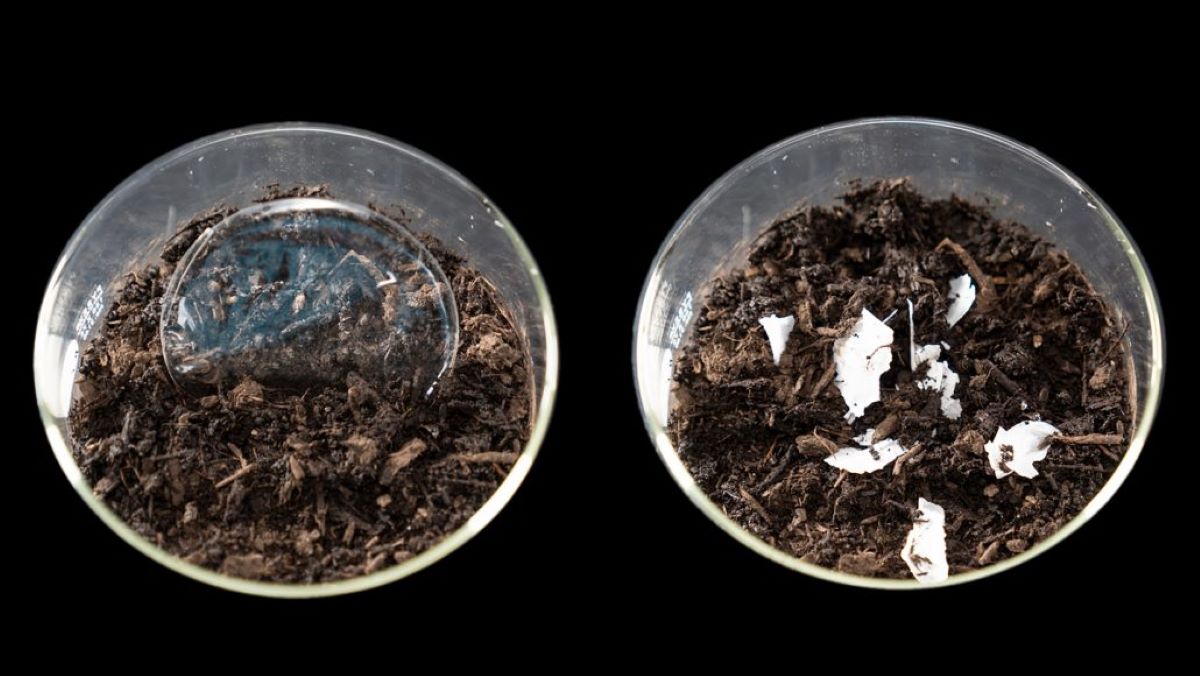

Problem Solving
How To Compost Compostable Plastic
Modified: February 9, 2024
Learn how to effectively compost compostable plastic and solve the problem of plastic waste. Discover easy steps to reduce your environmental impact.
(Many of the links in this article redirect to a specific reviewed product. Your purchase of these products through affiliate links helps to generate commission for Chicagolandgardening.com, at no extra cost. Learn more)
Table of Contents
- Introduction
- What is compostable plastic?
- Why should you compost compostable plastic?
- How to prepare your compost pile for compostable plastic
- Step-by-step guide to composting compostable plastic
- Tips for successful composting of compostable plastic
- Common mistakes to avoid when composting compostable plastic
- Alternative disposal options for compostable plastic
- Conclusion
Introduction
Welcome to the world of compostable plastic! As the global awareness of environmental issues continues to grow, so does the need for eco-friendly alternatives to traditional plastics. Compostable plastic is one such solution that is gaining popularity for its potential to reduce waste and minimize the impact on our planet.
Compostable plastic is a type of material that is designed to break down and decompose in a composting environment. Unlike traditional plastic that can take hundreds of years to degrade, compostable plastic undergoes a natural process of decomposition, turning into nutrient-rich compost that can be used to enrich soil and support plant growth.
In this article, we will explore the concept of compostable plastic and its benefits, as well as provide you with a step-by-step guide on how to compost compostable plastic effectively. Whether you are a seasoned composter or just starting your journey towards a greener lifestyle, this article will equip you with the knowledge and tools to make a positive impact on the environment.
So, why should you consider composting compostable plastic? Well, here’s the thing: plastic waste is a major environmental concern, with millions of tons of plastic ending up in landfills or polluting our oceans every year. By composting compostable plastic, you can divert plastic waste from the landfill and contribute to the creation of nutrient-rich compost that can be used to nourish plants and promote sustainable agriculture.
Now, without further ado, let’s dive into the wonderful world of compostable plastic and learn how to make the most of this eco-friendly material.
What is compostable plastic?
Compostable plastic, also known as biodegradable plastic, is a type of material that is designed to break down and decompose in a composting environment. Unlike traditional plastics, which can persist in the environment for hundreds of years, compostable plastics undergo a natural process of degradation that converts them into organic matter.
Compostable plastics are typically made from plant-based materials, such as cornstarch, sugarcane, or vegetable oils. These renewable resources are used to create polymers that exhibit similar properties to conventional plastics but with the added benefit of being capable of breaking down into harmless components.
It’s important to note that not all plastics labeled as “biodegradable” or “compostable” are created equal. Compostable plastic is certified under specific standards, such as the ASTM D6400 or EN 13432, to ensure that it meets the criteria for compostability. These standards assess factors such as the material’s ability to degrade within a certain timeframe, the absence of toxic residue, and the ability to support plant growth.
When compostable plastic is placed in a composting environment, such as a compost bin or facility, it undergoes a process called biodegradation. Microorganisms present in the composting environment break down the structure of the plastic, converting it into carbon dioxide, water, and biomass. This biomass then becomes part of the compost, providing essential nutrients for plants and soil.
Compostable plastics are not to be confused with recyclable plastics. While both are sustainable alternatives to traditional plastics, they serve different purposes. Compostable plastics are designed to be broken down through composting, whereas recyclable plastics are intended to be collected, sorted, and processed to be reused in the manufacturing of new products.
By choosing compostable plastics, you are taking a step towards reducing plastic waste and supporting a more circular economy. These materials have the potential to minimize the environmental impact of plastic consumption and contribute to a more sustainable future.
Why should you compost compostable plastic?
Composting compostable plastic presents several compelling benefits for both individuals and the environment as a whole.
1. Reduces plastic waste: One of the primary reasons to compost compostable plastic is to reduce plastic waste. Traditional plastics have a significant impact on the environment, taking hundreds of years to degrade and contributing to pollution in landfills and oceans. By composting compostable plastic, you can divert plastic waste from these disposal sites and contribute to the creation of nutrient-rich compost instead.
2. Promotes sustainable agriculture: Compostable plastic, when properly composted, generates nutrient-rich compost. This compost can be used to nourish plants and improve soil quality, thereby promoting sustainable agriculture. The organic matter in compost enhances soil structure, retains moisture, and provides essential nutrients for plant growth, reducing the need for chemical fertilizers.
3. Reduces reliance on fossil fuels: Conventional plastic is derived from fossil fuels, contributing to greenhouse gas emissions and climate change. In contrast, compostable plastic is often made from renewable resources, such as plant-based materials. By choosing to compost compostable plastic, you support the use of renewable resources and help reduce dependence on fossil fuels.
4. Closes the loop in the circular economy: Composting compostable plastic is a sustainable practice that aligns with the principles of the circular economy. In a circular economy, resources are kept in use for as long as possible, maximizing their value and minimizing waste. Composting compostable plastic allows the material to be transformed into nutrient-rich compost, which can then be used to grow new plants, continuing the cycle of regeneration.
5. Supports a greener future: By composting compostable plastic, you become part of the solution to the global plastic waste problem. Your actions contribute to the shift towards a more sustainable and eco-friendly society. Composting compostable plastic is a tangible and practical way to take responsibility for your environmental impact and make a positive difference.
Overall, composting compostable plastic offers numerous environmental benefits, such as reducing plastic waste, supporting sustainable agriculture, and promoting the use of renewable resources. By integrating composting into your waste management practices, you can play a vital role in creating a greener future for generations to come.
How to prepare your compost pile for compostable plastic
Preparing your compost pile to accommodate compostable plastic is an essential step in ensuring successful decomposition and integration of the material into your composting process. Here are some steps to follow:
1. Select the right composting method: There are various composting methods available, such as backyard composting, vermicomposting (using worms), or using a composting bin. Choose the method that fits your space, resources, and preferences.
2. Check local regulations: Before composting compostable plastic, familiarize yourself with any regulations or guidelines specific to your area. Some regions may have restrictions or specific requirements regarding compostable plastics, such as certification or processing methods.
3. Ensure adequate carbon-to-nitrogen ratio: Compostable plastics are high in carbon content. To maintain a balanced compost pile, ensure a proper carbon-to-nitrogen ratio. Add high-nitrogen materials, such as food scraps or grass clippings, along with the compostable plastics to maintain the ideal balance for decomposition.
4. Shred or cut compostable plastics: To accelerate the decomposition process, shred or cut compostable plastics into smaller pieces. This increases the surface area available for microorganisms to break down the material more effectively.
5. Layer compostable plastics with other organic materials: When adding compostable plastics to your compost pile, layer them with other organic materials, such as leaves, yard trimmings, or vegetable scraps. This helps distribute the decomposing agents evenly and aids in the decomposition process.
6. Maintain proper moisture levels: Compostable plastics require adequate moisture for decomposition. Ensure that your compost pile is moist, resembling a damp sponge. Regularly monitor the moisture levels and adjust as needed by adding water or dry materials to maintain the right balance.
7. Aerate the compost pile: Regularly turning or aerating the compost pile helps to provide oxygen to the microorganisms responsible for the decomposition process. This promotes faster decomposition and prevents odors or other issues associated with poor aeration.
8. Monitor and adjust: Keep an eye on your compost pile and monitor the progress of decomposition. If needed, make adjustments to the compost pile, such as adjusting the moisture levels, turning the pile more frequently, or adding more nitrogen-rich materials to maintain an optimal environment for decomposition.
By following these steps, you can ensure that your compost pile is properly prepared to accommodate compostable plastics. Remember, composting is a natural process, and it may take some time for the compostable plastics to break down completely. Patience and regular maintenance will help you achieve successful composting and contribute to a more sustainable and eco-friendly lifestyle.
Step-by-step guide to composting compostable plastic
Composting compostable plastic is a simple and effective way to reduce plastic waste and create nutrient-rich compost. Here is a step-by-step guide to help you successfully compost compostable plastic:
1. Choose the right compostable plastic: Ensure that the plastic you intend to compost is certified as compostable according to recognized standards. Look for labels or certifications such as ASTM D6400 or EN 13432. These certifications guarantee that the plastic meets specific criteria for compostability.
2. Prepare your compost pile: Set up your compost pile or bin in a convenient location. Ensure that the area receives partial sunlight and is easily accessible for adding and turning the compost. Follow the guidelines for preparing your compost pile, including layering carbon-rich and nitrogen-rich materials.
3. Shred or cut the compostable plastic: To expedite the decomposition process, shred or cut the compostable plastic into smaller pieces. This increases the surface area exposed to microorganisms and speeds up the breakdown.
4. Add compostable plastic to your compost pile: Layer the shredded compostable plastic with other organic materials in your compost pile. Aim for a ratio of roughly 2 parts carbon-rich materials (such as dry leaves or straw) to 1 part nitrogen-rich materials (such as food scraps or grass clippings).
5. Maintain moisture levels: Compostable plastic requires moisture for decomposition to occur effectively. Regularly check the moisture levels in your compost pile and adjust as needed. It should be moist, but not overly saturated or dry. If necessary, add water to maintain the right moisture content.
6. Turn the compost pile: Regularly turn or aerate the compost pile to provide oxygen to the microorganisms and ensure even decomposition. This can be done using a pitchfork or shovel. Aim to turn the pile at least every few weeks, or whenever the internal temperature rises significantly.
7. Monitor temperature and progress: Composting generates heat as microorganisms break down the organic matter. Use a compost thermometer to monitor the internal temperature of your compost pile. Ideal temperatures for composting range from 120°F to 160°F (49°C to 71°C). If the temperature drops significantly, consider adding more nitrogen-rich materials to the pile.
8. Patience and maintenance: Composting takes time, and the length of time it takes for compostable plastic to decompose will vary depending on various factors. Be patient and continue to maintain your compost pile by turning it, monitoring moisture levels, and adding additional organic materials as needed.
9. Harvest the compost: Once the composting process is complete, typically within 6 to 12 months, your compost will be ready to use. Harvest the compost by removing any remaining undecomposed materials and transfer the finished compost to your garden beds or use it as a soil amendment.
By following this step-by-step guide, you can successfully compost your compostable plastic and contribute to a more sustainable and eco-friendly lifestyle. Remember that composting is a natural process, and it may take time for the plastic to completely break down. With patience and regular maintenance, you can make a positive impact on the environment and reduce plastic waste through composting.
Tips for successful composting of compostable plastic
Composting compostable plastic requires some special attention to ensure successful decomposition. Here are some tips to help you achieve effective composting:
1. Follow composting guidelines: Familiarize yourself with the specific composting guidelines for the compostable plastic you are using. Different types of compostable plastics may have slightly different requirements for optimal decomposition, so be sure to read and follow the manufacturer’s instructions.
2. Avoid contaminants: Keep your compostable plastic free from any contaminants, such as non-compostable materials or chemicals. Contaminants can disrupt the decomposition process and produce undesirable byproducts in your compost.
3. Achieve proper carbon-to-nitrogen ratio: Maintain a balanced carbon-to-nitrogen ratio in your compost pile. Compostable plastic is high in carbon, so ensure that you add enough nitrogen-rich materials, such as food scraps or green yard waste, to provide a good balance. This helps the microorganisms break down the plastic effectively.
4. Optimize shredding: Shred or cut the compostable plastic into smaller pieces to increase their surface area and speed up decomposition. The smaller the particles, the easier it is for the microorganisms to break them down. Aim for pieces no larger than a few inches in size.
5. Maintain moisture levels: Proper moisture is crucial for successful composting of compostable plastic. Keep your compost pile moist but not overly wet. Use a moisture meter or squeeze a handful of compost to check if it feels like a damp sponge. If it’s too dry, add water; if it’s too wet, add dry organic materials like leaves or shredded paper.
6. Aerate the compost pile: Regularly turn or aerate your compost pile to provide oxygen to the microorganisms and prevent the formation of anaerobic conditions. Turning the pile every few weeks helps maintain an optimal environment for decomposition.
7. Monitor temperature: Composting compostable plastic generates heat as microorganisms break down the organic matter. Monitor the internal temperature of your compost pile with a compost thermometer. Aim for a temperature range of 120°F to 160°F (49°C to 71°C) to ensure effective decomposition.
8. Be patient: Composting compostable plastic may take longer than other organic materials. Allow sufficient time for the plastic to decompose completely. It can take between 6 to 12 months or even longer, depending on the specific type of compostable plastic and the conditions of your compost pile.
9. Harvest and use the compost: Once the composting process is complete and your compostable plastic has broken down, harvest the finished compost. Remove any remaining undecomposed materials and use the nutrient-rich compost to enrich your garden soil or as a top dressing for lawns and plants.
By implementing these tips, you can improve the success of composting compostable plastic. Remember to be diligent in maintaining the right conditions, and soon you’ll have nutrient-rich compost ready to support healthy plant growth while reducing plastic waste in an environmentally friendly way.
Common mistakes to avoid when composting compostable plastic
Composting compostable plastic is a sustainable practice that requires attention to detail. To ensure effective decomposition and avoid potential issues, it’s important to be aware of common mistakes that can hinder the composting process. Here are some mistakes to avoid when composting compostable plastic:
1. Confusing compostable with biodegradable: Compostable and biodegradable are not interchangeable terms. Only plastics that are certified compostable according to recognized standards should be composted. Biodegradable plastics may not break down efficiently in a composting environment.
2. Composting non-certified plastics: Not all plastics labeled as “compostable” are certified. Look for certifications like ASTM D6400 or EN 13432 to ensure the plastic meets the proper compostability criteria. Composting non-certified plastics may result in incomplete decomposition or the release of contaminants into your compost.
3. Adding compostable plastic in large quantities: It’s important to maintain the proper balance of materials in your compost pile. Avoid adding large quantities of compostable plastic at once, as it can overwhelm the pile and disrupt the decomposition process. Slowly introduce compostable plastic in smaller amounts over time.
4. Improper shredding or cutting: Compostable plastics should be shredded or cut into smaller pieces to enhance decomposition. Failing to shred or cut the plastic can slow down the process significantly. Aim to shred or cut compostable plastic into smaller particles to increase the surface area available for microorganisms to break it down.
5. Ignoring the carbon-to-nitrogen ratio: Maintaining the right carbon-to-nitrogen ratio in your compost pile is crucial for successful decomposition. Compostable plastic is generally high in carbon content. Ensure a proper balance by adding nitrogen-rich materials like food scraps or grass clippings along with the compostable plastic.
6. Neglecting moisture levels: Composting requires proper moisture to support the activity of microorganisms. Neglecting moisture levels can impede decomposition. Keep your compost pile moist, resembling a damp sponge. Regularly check and adjust moisture levels as needed to maintain optimal conditions.
7. Failing to turn or aerate the compost pile: Adequate oxygen is necessary for the microorganisms to break down the compostable plastic effectively. Failing to turn or aerate your compost pile can create anaerobic conditions that slow down decomposition and produce unpleasant odors. Regularly turn the pile to ensure proper aeration.
8. Rushing the process: Composting compostable plastic takes time. It’s important to be patient and allow sufficient time for the plastic to decompose completely. Rushing the composting process may result in incomplete breakdown and the persistence of plastic residues in the compost.
9. Using compost before it’s fully mature: It’s essential to allow the composting process to reach completion before using the compost. Using immature compost can potentially introduce harmful bacteria or weed seeds to your garden. Make sure the compost is fully matured before incorporating it into your soil.
By avoiding these common mistakes, you can enhance the success of composting compostable plastic and ensure a more efficient and effective composting process. Remember to always read and follow the manufacturer’s instructions for composting specific types of compostable plastic and maintain the right balance of materials in your compost pile.
Alternative disposal options for compostable plastic
In addition to composting, there are alternative disposal options for compostable plastic that can still contribute to a more sustainable approach towards reducing plastic waste. Here are some alternative options to consider:
1. Industrial composting facilities: If you don’t have access to a suitable composting setup at home, consider sending your compostable plastic to an industrial composting facility. These facilities are equipped with specialized composting systems that can efficiently break down compostable materials on a large scale. Check with your local waste management authorities or composting facilities to see if they accept compostable plastics.
2. Curbside composting: Some municipalities and waste management services offer curbside collection programs specifically for compostable materials, including compostable plastics. Check with your local authorities to see if they provide curbside composting services and what specific guidelines or requirements they have for compostable plastic disposal.
3. Organic waste collection programs: If curbside composting is not available in your area, check if there are organic waste collection programs that accept compostable plastics. These programs typically collect food waste and other organic materials for composting. Compostable plastics can be included alongside these other organic waste streams.
4. Biogas or energy generation: Some compostable plastics can be processed through anaerobic digestion or other energy generation processes. In these systems, the organic material, including compostable plastics, is broken down to produce biogas or other forms of renewable energy. Contact local renewable energy facilities or waste management companies to inquire about disposal options for compostable plastics in these systems.
5. Return to the manufacturer: Some manufacturers of compostable plastic products have take-back programs or recycling initiatives in place. They may provide specific instructions on how to return or recycle their compostable plastic products. Check the product packaging or the manufacturer’s website for information on how to properly dispose of their compostable plastic items.
6. Reuse or repurpose: Consider finding creative ways to reuse or repurpose compostable plastic items. For example, some compostable plastic packaging can serve as plant pots or seedling trays. Before reusing or repurposing, ensure that the compostable plastic is clean and free from any contaminants.
7. Education and advocacy: Promote awareness about compostable plastics and their proper disposal methods. Educate others on the benefits of composting and encourage the use of compostable plastics in an environmentally responsible manner. Advocacy efforts can help drive change and increase the availability of composting and alternative disposal options for compostable plastics.
It’s crucial to remember that compostable plastics should not be sent to traditional recycling facilities or disposed of with regular waste. They require specific disposal methods to ensure proper decomposition and reduce contamination in other waste streams.
Exploring these alternative disposal options for compostable plastic can help reduce environmental impact and support a more sustainable approach to managing plastic waste. Be sure to check local regulations and guidelines to determine the most appropriate disposal method for compostable plastics in your area.
Conclusion
Composting compostable plastic is a powerful step towards reducing plastic waste and promoting a more sustainable future. By understanding what compostable plastic is and why it’s crucial to compost it, individuals can play an active role in minimizing the environmental impact of plastic consumption.
Compostable plastic, made from renewable resources, offers a viable alternative to traditional plastics that take hundreds of years to break down. Through the process of composting, these materials can be transformed into nutrient-rich compost, which supports sustainable agriculture and helps close the loop in the circular economy.
To successfully compost compostable plastic, it’s essential to prepare your compost pile correctly, follow the recommended steps, and avoid common mistakes. Maintaining the right carbon-to-nitrogen ratio, shredding the plastic, and ensuring proper moisture and aeration are all key factors to consider.
However, composting is not the only disposal option for compostable plastic. Industrial composting facilities, curbside composting programs, and organic waste collection programs are alternative methods to consider. Additionally, some compostable plastics can be processed for biogas or energy generation, returned to the manufacturer, or even repurposed creatively.
It’s important to research and understand the specific requirements and guidelines for compostable plastic disposal in your area. Local regulations, certifications, and instructions should be followed to ensure proper composting and minimize contamination in other waste streams.
By composting compostable plastic and exploring alternative disposal methods, individuals can contribute to a more sustainable and eco-friendly approach to managing plastic waste. Taking these steps not only helps preserve the environment but also supports the transition towards a circular economy and a greener future for generations to come.
